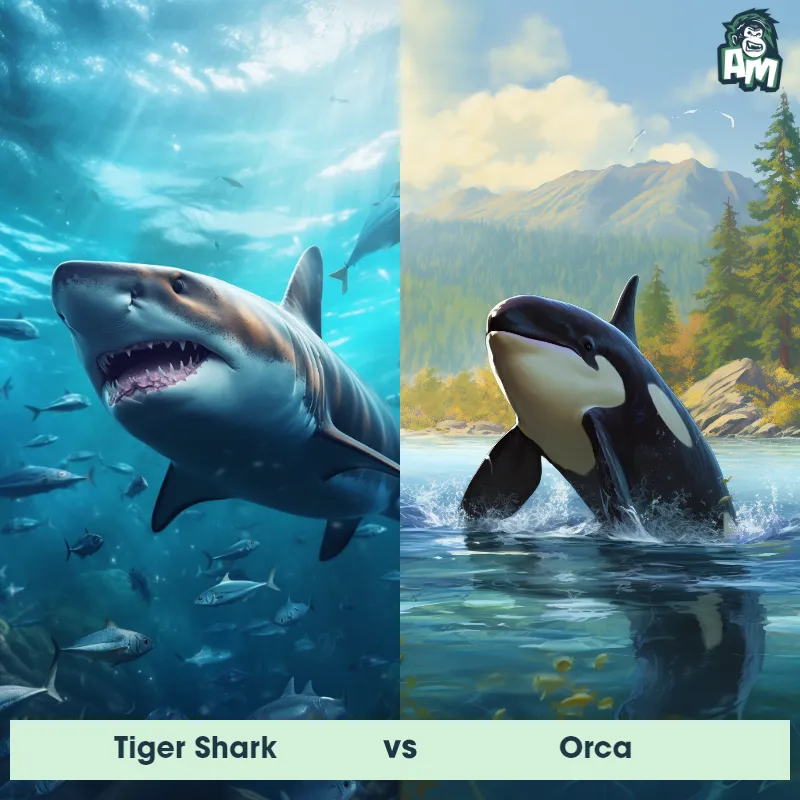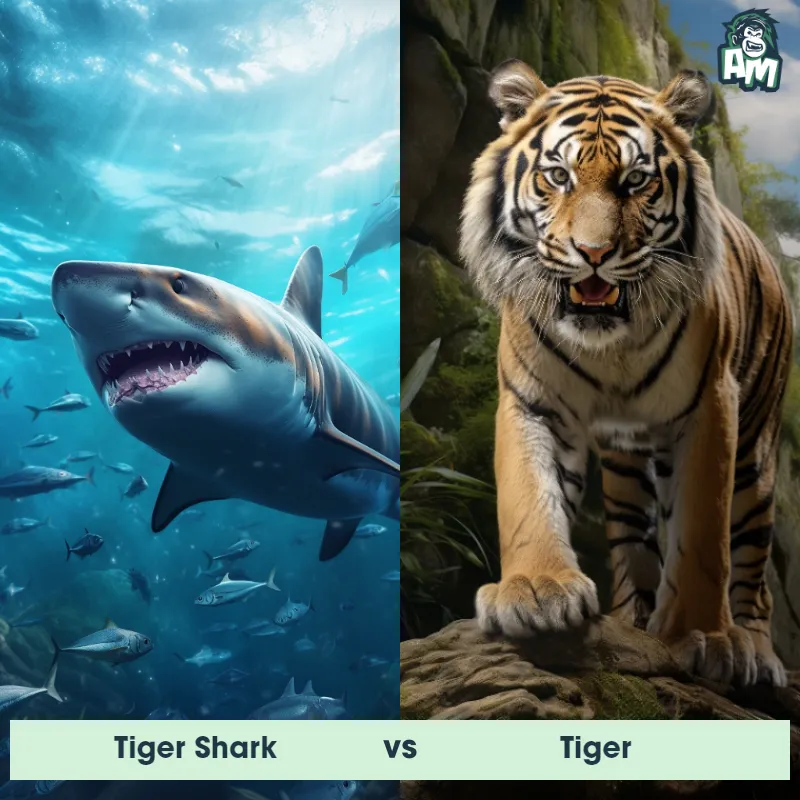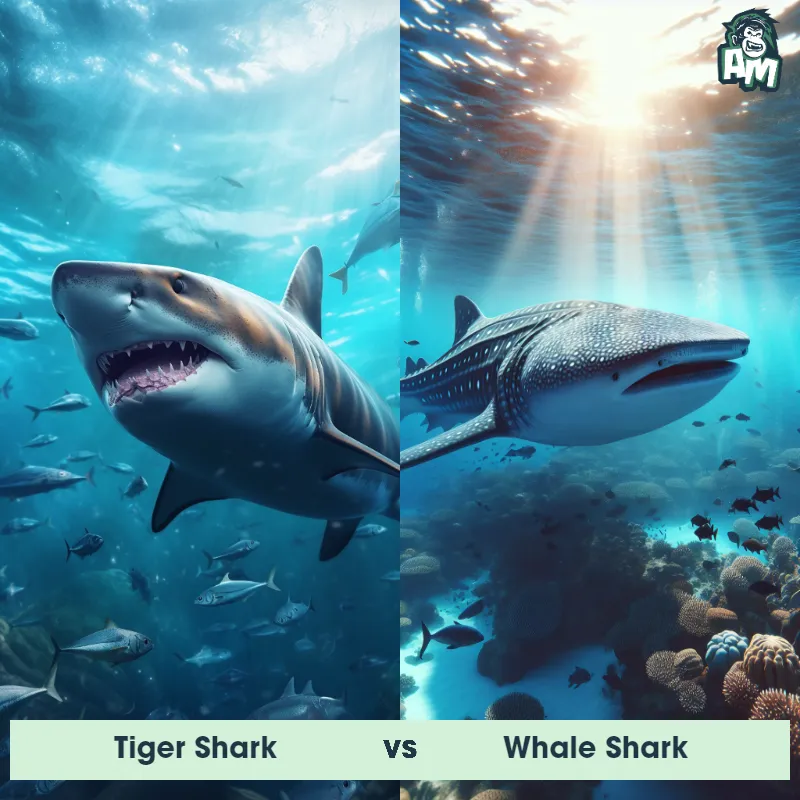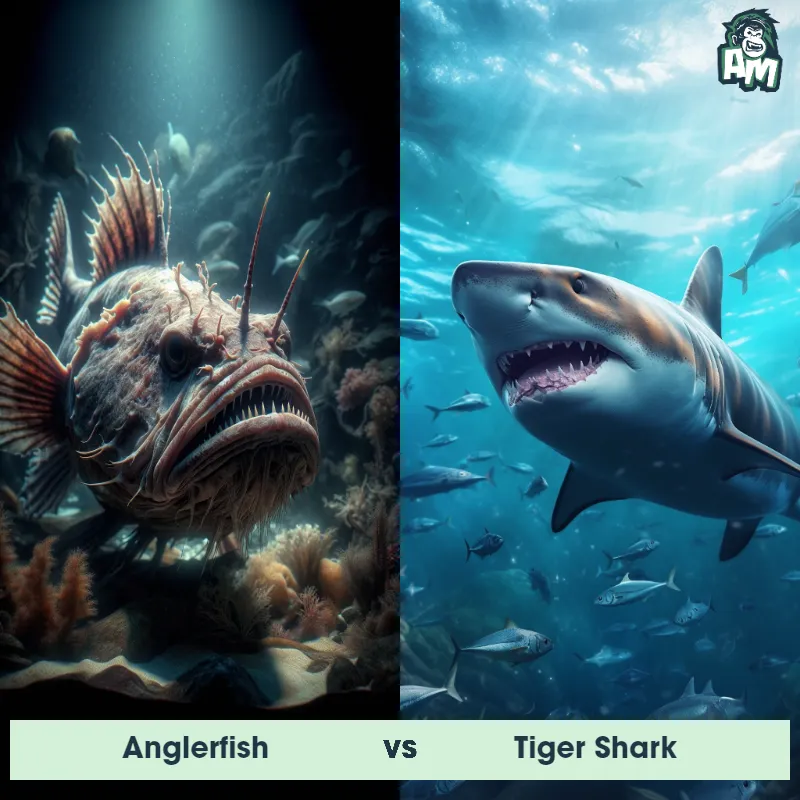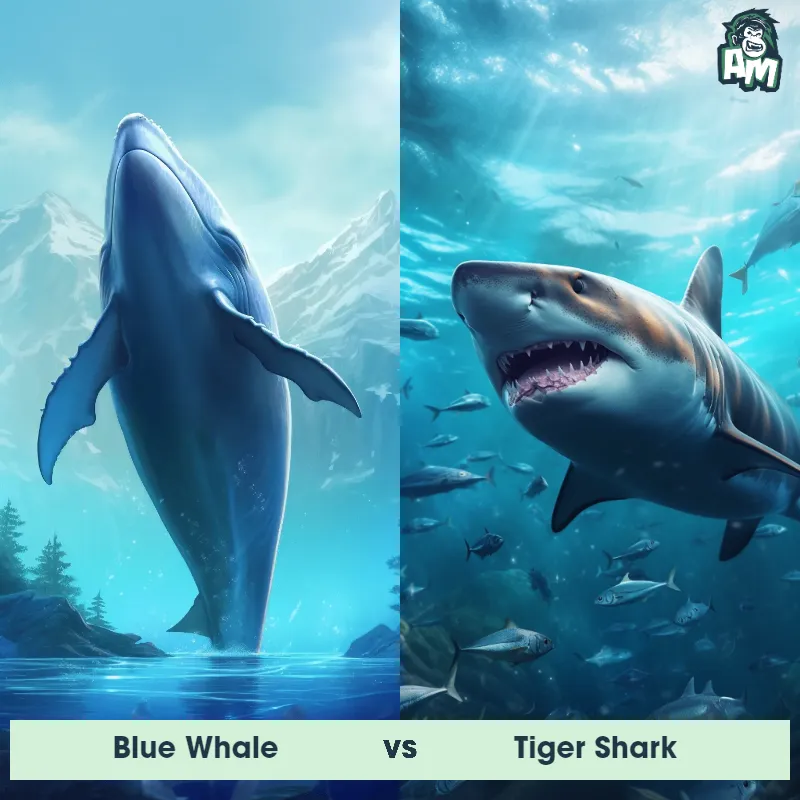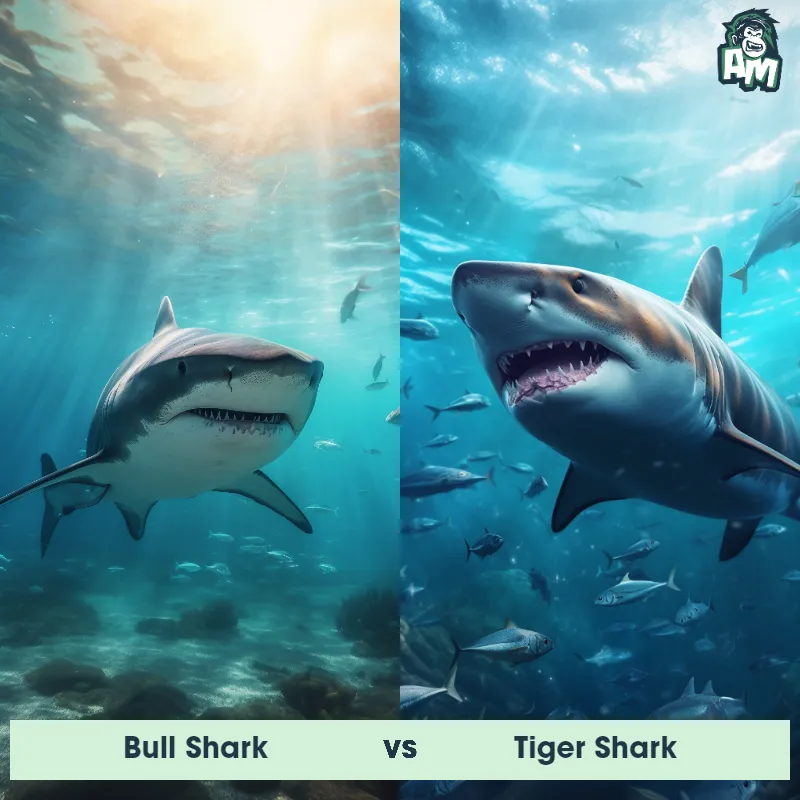The Tiger Shark
The Tiger Shark, also known as Galeocerdo cuvier, is a large and powerful marine predator that can be found in tropical and temperate waters around the world. It is characterized by its unique pattern of vertical dark stripes, which resemble those of a tiger and give the shark its name. With a robust and torpedo-shaped body, the Tiger Shark can reach lengths of up to 16 feet and weigh over 1,400 pounds. This species is known for its voracious appetite and is often referred to as the "garbage can of the sea" due to its ability to consume almost anything it comes across, including fish, turtles, birds, carrion, and even trash. Its large jaws are filled with sharp and serrated teeth, capable of crushing through bones and shells. Unlike most sharks, Tiger Sharks are known to be quite curious and have been observed investigating and nibbling on objects in their environment.

| Tiger Shark | |
|---|---|
| Size | Up to 18 feet (5.5 meters) |
| Weight | Over 1,400 pounds (635 kilograms) |
| Speed | Speed: 20-30 mph (32-48 km/hr) |
| Key Strength | Powerful jaws and teeth |
| Biggest Weakness | Vulnerable to attacks on the gills |
| Scientific Name | Galeocerdo cuvier |
| Family | Carcharhinidae |
| Habitat | Warm waters |
| Geography | Found worldwide |
| Diet | Varied, including sea turtles, clams, garbage, and other sharks |
| Lifespan | 27 years - 50 years |

The Tiger Shark
The Tiger Shark, also known as Galeocerdo cuvier, is a large and powerful marine predator that can be found in tropical and temperate waters around the world. It is characterized by its unique pattern of vertical dark stripes, which resemble those of a tiger and give the shark its name. With a robust and torpedo-shaped body, the Tiger Shark can reach lengths of up to 16 feet and weigh over 1,400 pounds. This species is known for its voracious appetite and is often referred to as the "garbage can of the sea" due to its ability to consume almost anything it comes across, including fish, turtles, birds, carrion, and even trash. Its large jaws are filled with sharp and serrated teeth, capable of crushing through bones and shells. Unlike most sharks, Tiger Sharks are known to be quite curious and have been observed investigating and nibbling on objects in their environment.
Fun Fact: The Tiger Shark has an incredibly diverse and varied diet, and their stomachs have been found to contain all sorts of unusual objects such as tires, license plates, and even a suit of armor!
| Tiger Shark | |
|---|---|
| Size | Up to 18 feet (5.5 meters) |
| Weight | Over 1,400 pounds (635 kilograms) |
| Speed | Speed: 20-30 mph (32-48 km/hr) |
| Key Strength | Powerful jaws and teeth |
| Biggest Weakness | Vulnerable to attacks on the gills |
| Scientific Name | Galeocerdo cuvier |
| Family | Carcharhinidae |
| Habitat | Warm waters |
| Geography | Found worldwide |
| Diet | Varied, including sea turtles, clams, garbage, and other sharks |
| Lifespan | 27 years - 50 years |
Match Highlights
Tiger Shark Matchups
We use AI to simulate matchups between the Tiger Shark and other animals. Our simulation considers size, strength, and natural predatory behaviors to determine the most likely outcome.
Tiger Shark: Diet, Predators, Aggression, and Defensive Behaviors
What do Tiger Sharks eat?
Tiger sharks have a varied diet and are known as "garbage cans of the sea" due to their ability to consume almost anything. They primarily feed on fish, seals, birds, dolphins, sea snakes, and even other sharks. They are scavengers and have been found with non-food items in their stomachs such as tires, license plates, and pieces of clothing.
Do Tiger Sharks have any predators?
As apex predators, Tiger Sharks do not have many natural predators. However, larger sharks such as the Great White Shark and the Killer Whale have been known to prey on Tiger Sharks. Additionally, humans are the biggest threat to Tiger Sharks due to overfishing and habitat destruction.
Are Tiger Sharks aggressive?
Tiger Sharks are known to be one of the most aggressive shark species and are responsible for a large number of attacks on humans. They are often curious and can mistake humans for prey, leading to potentially dangerous encounters. However, most attacks are believed to be a case of mistaken identity rather than deliberate aggression.
Do Tiger Sharks fight?
Tiger Sharks are solitary animals and generally do not engage in fights with members of their own species. However, they may exhibit aggressive behavior towards competitors or during mating rituals. Male Tiger Sharks have been observed fighting over access to a female during mating season.
How do Tiger Sharks defend themselves?
Tiger Sharks have several defense mechanisms to protect themselves from threats. They have powerful jaws filled with serrated teeth that can deliver a powerful bite. They also have a unique ability to vomit their stomach contents as a form of defense, making them less appealing to potential predators.
What is the biggest weakness of Tiger Sharks in a fight?
Despite their impressive size and strength, Tiger Sharks do have a vulnerability in their gills. If their gills are damaged or obstructed, they can quickly become disoriented and suffocate. This makes them susceptible to attacks from larger predators who target their gills as a weak point.
Fun Fact: Tiger Sharks are one of the few shark species that are known to eat sea turtles. They have specialized teeth and strong jaws, which allow them to crack and consume the turtle's hard shell.
Fun Fact: Unlike most sharks, Tiger Sharks are known to have extremely low picky standards when it comes to what they eat – they have been reported to swallow other sharks, including species as large as great whites and even smaller sharks of their own species.











